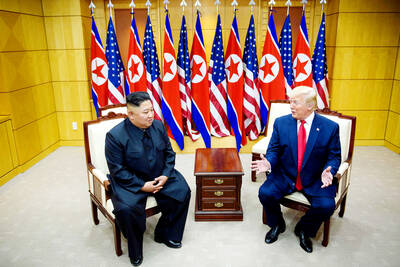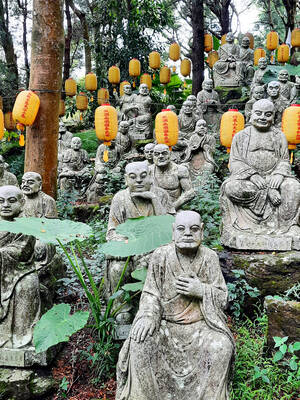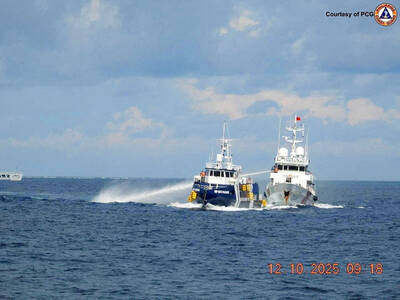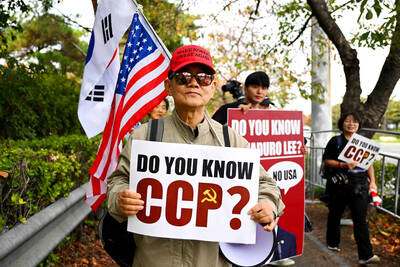For centuries, turtle eggs have been as good as currency on this tiny Indonesian island — they helped put children through school and kept the village kitty in petty cash.
But four years ago the people of Runduma, population 500, decided to change their way of life and start protecting the endangered animals, which return year after year to lay their eggs on the surrounding islands.
Now environmentalists say turtle numbers are increasing in the seas off southeast Sulawesi, and the turtle hunters have become their guardians in the battle to save the marine reptiles from extinction.
“We used to have a long and unique tradition of organizing the egg collection among the people here,” Runduma village chief La Brani said.
“Families took turns every night to collect eggs and 30 out of around 100 eggs from each nest were set aside for the village’s petty cash.”
Most of the eggs were taken from nearby Anano, an uninhabited tropical paradise that lies in ancient turtle nesting grounds between the Pacific and Indian oceans.
Money from the sale of the community eggs financed public spending on things like a new water filtration system, and helped poorer families cover expenses such as school fees for their children.
“It was terribly difficult at the beginning to convince people not to collect eggs as it was a living for them,” the village chief said.
FUTURE GENERATIONS
But the loss of this traditional source of income has not worried residents like Hatipa, 42, who would receive about US$0.09 per egg — enough to put her two children through school.
“I stopped collecting eggs in 2005 because I was afraid that if it continued, future generations would never know what a turtle looked like,” she said.
“Since then I’ve been struggling to protect the turtles. If people are gathering for a chat I tell them how we have to live side by side with the turtles.”
Under a 2005 agreement with the local administration and environmental groups, the islanders pledged to stop their trade in eggs and turtle meat and instead protect the endangered creatures.
In exchange the government has topped up the remote community’s public coffers, sent teachers and organized visits from celebrities including pop singers and beauty queens.
“Nobody came here before but now we have celebrity visits. Turtles have given us their blessings,” Hatipa said.
To supplement the poor fishing village’s income, donors can “adopt” a baby turtle or nest for up to US$96.
Purwanto, the coordinator of a turtle conservation program run jointly by the Nature Conservancy and WWF, said the adoptions helped educate local people about their marine environment as well as raise money.
“We occasionally keep one to five baby turtles from a nest ... and allow visitors to release them into the sea as a symbolic act to save the endangered species. We hope to raise awareness this way,” he said.
A short boat ride away on Anano, the evidence of rising turtle numbers is clear. Hour-glass shaped nests full of egg shells are scattered along the pristine beach, each one marking a new generation of turtles safely dispatched into the sea.
“During the peak season from September to December, up to seven turtles will lay their eggs here every night,” Purwanto said.
Some 243 turtles laid an estimated 3,000 eggs on the island last year, compared to just 20 in 2006 and 77 in 2007, he said.
Endangered green and hawksbill turtles are the most common visitors. The WWF estimates that 203,000 breeding green turtle females exist in the wild, and only 8,000 of the more critically endangered hawksbills.
FROM POACHING TO ECOTOURISM
All seven marine turtle species are experiencing severe threats to their survival, especially from pollution and the destruction of habitats such as coral reefs, beds of seagrass, nesting beaches and mangrove forests.
Those hatchlings that survive the exhausting dash from their nests to the sea face the ever-increasing risk of drowning in fishing gear or waste such as plastic bags as they make their epic migrations to feeding grounds.
Anano is a success story but elsewhere in the vast Indonesian archipelago turtles are being killed and exploited with impunity, conservationists said.
Laws setting out fines of up to US$10,000 and jail terms of five years for anyone caught stealing eggs or poaching live turtles are rarely enforced.
“Egg collection occurs in many parts of Indonesia, especially on Borneo and the western part of Sumatra island where turtle eggs are still commercialized,” said WWF’s national coordinator of marine species conservation Creusa Hitipeuw.
“Bali has been a main destination market of turtle meat which is illegally smuggled from the nearby islands of West Nusa Tenggara such as Lombok and Sumbawa.”
Located around 1,500km northeast of Jakarta, Anano and Runduma are among a cluster of islands in Wakatobi district on the southern tip of Sulawesi island.
They were declared a national park in 1996 and are among 11 zones the local government has set aside for marine and reef conservation.
“For the last three years we included environmental subjects in the school curriculum for elementary and junior high school,” said Wakatobi district chief Hugua, a former environmental activist.
“Wakatobi’s biggest development income will focus on ecotourism, which will maintain, among other things, the sustainability of sea turtle conservation.”

US President Donald Trump may have hoped for an impromptu talk with his old friend Kim Jong-un during a recent trip to Asia, but analysts say the increasingly emboldened North Korean despot had few good reasons to join the photo-op. Trump sent repeated overtures to Kim during his barnstorming tour of Asia, saying he was “100 percent” open to a meeting and even bucking decades of US policy by conceding that North Korea was “sort of a nuclear power.” But Pyongyang kept mum on the invitation, instead firing off missiles and sending its foreign minister to Russia and Belarus, with whom it

When Taiwan was battered by storms this summer, the only crumb of comfort I could take was knowing that some advice I’d drafted several weeks earlier had been correct. Regarding the Southern Cross-Island Highway (南橫公路), a spectacular high-elevation route connecting Taiwan’s southwest with the country’s southeast, I’d written: “The precarious existence of this road cannot be overstated; those hoping to drive or ride all the way across should have a backup plan.” As this article was going to press, the middle section of the highway, between Meishankou (梅山口) in Kaohsiung and Siangyang (向陽) in Taitung County, was still closed to outsiders

Many people noticed the flood of pro-China propaganda across a number of venues in recent weeks that looks like a coordinated assault on US Taiwan policy. It does look like an effort intended to influence the US before the meeting between US President Donald Trump and Chinese dictator Xi Jinping (習近平) over the weekend. Jennifer Kavanagh’s piece in the New York Times in September appears to be the opening strike of the current campaign. She followed up last week in the Lowy Interpreter, blaming the US for causing the PRC to escalate in the Philippines and Taiwan, saying that as

The Chinese Communist Party (CCP) has a dystopian, radical and dangerous conception of itself. Few are aware of this very fundamental difference between how they view power and how the rest of the world does. Even those of us who have lived in China sometimes fall back into the trap of viewing it through the lens of the power relationships common throughout the rest of the world, instead of understanding the CCP as it conceives of itself. Broadly speaking, the concepts of the people, race, culture, civilization, nation, government and religion are separate, though often overlapping and intertwined. A government